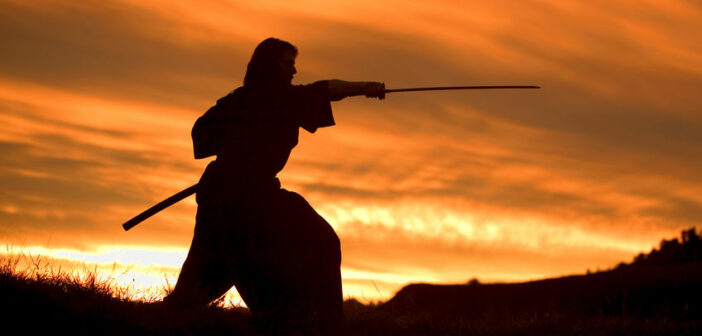
Radar Pictures
In the early 2000s, Gladiator renewed interest in the historical action film. Kingdom of Heaven, Troy, Alexander and Master and Commander are some of the most notable examples of this time, but the greatest and most unsung of them all is Edward Zwick’s majestic The Last Samurai. Released to moderately positive reviews, a few lacklustre Oscar nominations, and an impressive box office gross in Japan, it has since become a forgotten film that should be treated with the same reverence as Gladiator and Braveheart.
Often and unfairly dismissed as ‘Japanese Dances With Wolves’, the narrative follows Tom Cruise’s Captain Nathan Algren, an Indian Wars’ veteran who is traumatised by the violence he committed against Native American Indians. Descending into rageful alcoholism, he is employed by his old Colonel, Bagley, to train a Japanese army in modern methods (rifles, pistols). This is in the service of Omura, a Japanese businessman who wants to suppress the samurai rebellion led by Katsumoto (Ken Watanabe) in order to strip Japan of its traditional heritage and thrust the young Emperor into the modern world of imperialism and technology. Algren takes the job, apparently happy to kill anyone and anything for money, but Bagley he would “kill for free.” In the first encounter with samurai forces, Algren is taken captive and gradually becomes accustomed to the samurai culture, learning their ways and appreciating their sense of honour and harmony, eventually deciding to join them to repel the imperial forces.

Radar Pictures
Coming out between Dances With Wolves and Avatar dooms this narrative to being labelled as repetitive; many critique it as a ‘white saviour’ narrative though this misses the film’s point. In the indigenous culture of Japan, Algren finds a purpose that saves him from his suicidal thoughts (the “they are not ready” scene illustrates how little he values his life) and alcoholism. The film is not about a white man saving the ‘uncivilised savage’ but rather the ability for cultures to coincide and converse; for a globalised way to honour the past and fuse it with the present. The film promotes indigenous culture through Katsumoto and the Emperor’s relationship; Algren is simply a messenger who is himself ‘saved’ by Katsumoto’s kindness. It is a film of transnational unity.
Edward Zwick is a strange if competent director. He has made similar historical films like Glory and Legends of the Fall, rom-coms like Love and Other Drugs, and Oscar fare like Blood Diamond. The Last Samurai weaves his skill sets together. This is a stunning film, with cinematographer John Toll capitalising on the New Zealand landscapes to ensure they are fitting stand-ins for feudal Japan. One battle scene in a forest, drenched in mist, is eerily beautiful. Another essential ingredient is Hans Zimmer’s soothing score- one of his best pieces. Harnessing Japanese instruments, Zimmer nails the assignment.
Many say Cruise can only act one role: the self-assured hotshot who is good at what he does. To them I say this: Tropic Thunder. Born on the Fourth of July. Collateral. The Last Samurai. His performance here is spot on. We feel rage with him, dismay, serenity, and melancholy. He is a traumatised man who we connect with and sympathise. Watanabe is a perfect foil for Cruise. Their scenes together are electric because of their circumstance; two opposing generals who are both impressed with each other’s skill but disagree with their respective methods. Their “conversations” propel the film far past Dances With Wolves and Avatar when it comes to character.

Radar Pictures
Then there is the action. All done in-camera, Zwick’s set-pieces are stirring. There is a gonzo scuffle with ninja assassins, a night-time raid to free Katsumoto, a slow-motion street fight and the final battle, which balances strategy, emotion and masterful choreography. John Toll also shot Braveheart, and his commitment to getting the camera right into the blood and chaos is riveting.
The more The Last Samurai is seen, the easier it is to bask in its wonderful simplicity. It doesn’t require flashy effects, digital armies, sex scenes or moments of overwhelming testosterone. It is patient and articulate with its characters and themes, offering redemption for the Native American Indians by defending the Japanese samurai. Some criticise its glorification of these warriors (samurai were also meant to be greedy and corrupt) but this too misses the point: the film is a microcosm for any suppressed indigenous culture in the face of capitalism and globalisation. The story here, of a man from a ‘civilised’ society helping the ‘uncivilised’ and realising those labels should perhaps be reversed, is an immortal one.
The Last Samurai is available to stream on Netflix now, as well as to buy on Blu-ray and DVD. Watch the trailer below:




